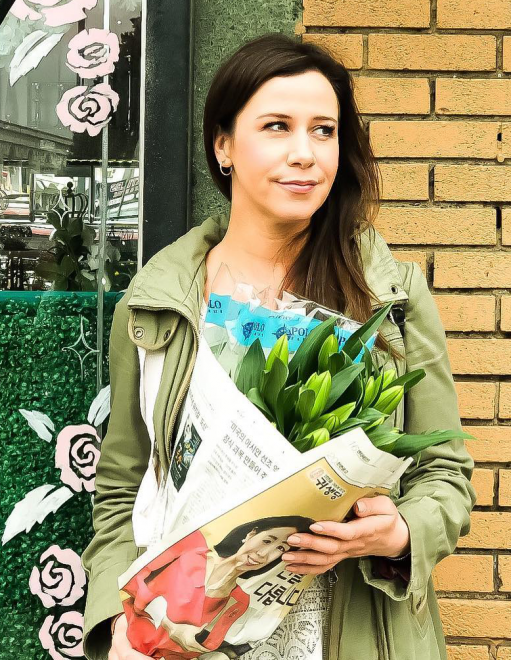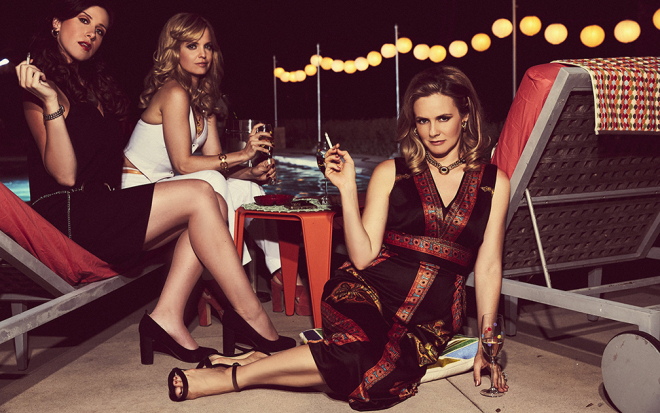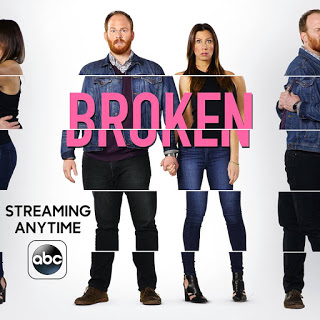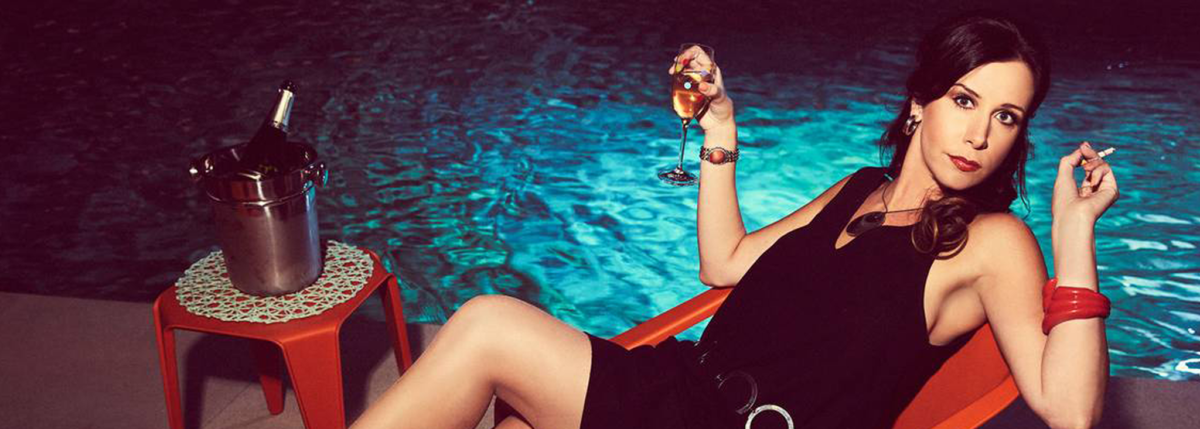Actress Jennifer Bartels on Embracing Life with T1D
Jennifer Bartels is an actress, writer and producer residing in Los Angeles. She can be seen on shows like Hulu’s “Shrill,” Paramount Network’s “American Woman,” and truTV’s “Friends of the People.” After being diagnosed with type 1 later in life, she began adding “stigma breaker” to her list of credits. Beyond Type 1 recently talked to Jennifer about her diagnosis, how she is bringing awareness to type 1 diabetes (T1D), and her plans for the future.
BT1: Thanks for taking the time to talk to us today—Can you tell us about your recent diagnosis with Type 1?
Jennifer Bartels: Thank you! I’m excited for anything I can do to help educate, or break the stigma and show that you can be more than this disease that’s not very fun.
So to go back further, how it all kind of came together, I have hypothyroidism so I’m more prone to autoimmune issues because my body enjoys attacking itself. I’ve had hypothyroidism since my mid 20’s… My mother had it, my grandma had it, so I just thought the buck stops there. Then years went by, I shot TV shows, I lived in New York, I lived in LA, and I was shooting for a season of a show I was on called “American Woman” and I was noticing a few specific symptoms that I’d never noticed before. I was thinking I had a urinary tract infection (UTI). I was going to the bathroom and peeing like five or six times a night, and I was like, “I don’t drink that much water.”
I was getting really tired and feeling just off, but I was losing weight, and in this weird twisted way I was thinking, “Well, I guess this is what happens. You get on a TV show and then you look your best. God just gives you that gift.” But also it was weird because I was ravenously hungry all the time. I’m a big eater. I work out to eat. I was noticing I was insatiably hungry, and then peeing all the time. Then just feeling off, but losing a ton of weight.
It actually coexisted with this really steamy bikini scene, so if I had to look at the glass half full, I was like, “Oh, I feel very confident in this crochet bikini because my pancreas is dead, but I look good.” Then I started getting a little worried, and we had a hiatus of the show, and on that hiatus I went to the doctor. They told me my sugar was high, almost 200. I didn’t know what that meant of course. Which looking at diabetic ketoacidosis (DKA), thank goodness it wasn’t that high, but it was alarming.
This was 2017, in the spring. I don’t have a specific diaversary. I want to say April or May of 2017. So I went to an endocrinologist within that week and they did a fasting blood test, and I was like 207. They initially didn’t know if it was type 2 or late onset. Then they ruled out type 2, and then I went to another specialist, and they ruled out late onset and told me that I have type 1.
What was the adjustment period like?
 For the first few months I was just taking metformin, and my sugars were like 170 after a meal. It wasn’t that bad. Then progressively it got worse, and I realized how serious the situation can be. You just work with it. There were a lot of things that were thrown at me. Now you have to take your blood with this little pincher… Now I look back at it and it’s nothing. My fingers just have little holes in them, but initially I had so much trouble I almost fainted. I was like, “I can’t do this. How do kids do this?”
For the first few months I was just taking metformin, and my sugars were like 170 after a meal. It wasn’t that bad. Then progressively it got worse, and I realized how serious the situation can be. You just work with it. There were a lot of things that were thrown at me. Now you have to take your blood with this little pincher… Now I look back at it and it’s nothing. My fingers just have little holes in them, but initially I had so much trouble I almost fainted. I was like, “I can’t do this. How do kids do this?”
So I was taking metformin for the first few months and I didn’t like the side effect that if you had a glass of wine then you had to really watch. I was like, “Wait a minute. I have diabetes and I can’t have a glass of wine? What else can the universe throw at me?” And it was making me feel a little weird. It wasn’t my favorite, so I started taking, actually I just started taking basal. I didn’t really take any short-term at that time, the basal was covering because I was in the honeymoon period.
It was a real learning adjustment for me, and lifestyle change. But I feel like every day I’m learning more and more. I surround myself with good folks.
How are you managing your diabetes currently?
I am on multiple daily injections (MDI), taking basal and bolus as needed. I try to maintain a low-carb lifestyle because that’s what works for me. I prefer not to guess every meal and worry about spikes or lows unless it’s a special occasion. Then I have the Dexcom G6, which has been—when it works—amazing. It helps me with my workouts, and it kind of is just a whole system. But I’ve never used a pump. I’m a little scared. I’ve heard about this looping thing. I’m excited, but I’m not ready yet. Then I just feel like for me Dexcom is a nice middle ground to manage it, but not always… It’s a reminder, when you take off your shirt you’re like, “Oh, I’m a little bit of a robot.”
I felt like I’m going to do the best I can with what I’m comfortable with, and for everyone that’s different. And everyone has their success and their horror stories, but MDI and the Dexcom are what work for me.
What was your motivation to go public about living with T1D? How soon after your diagnosis did you make that decision?
I would say for the first few months I didn’t even know what I was dealing with. I really didn’t know the weight of the situation. I was quiet about it, but that’s just because I didn’t make that big of a deal. The honeymoon phase was slowly, slowly breaking my heart. Around Christmas 2017, I did a very empowering photo shoot with a dear photographer of mine in Raleigh, North Carolina, named Richard Barlow. I thought, “I just want to embrace myself. All the success I’ve had this year with my professional career, and the fact that I’m still here and I have type 1… You know what? I want to take a picture that’s fun and sexy and strong that I feel good about myself in, and I’m going to take in insulin shot.”
It just kind of felt organic. I have a platform. I know there are days where I don’t know if I can do something, and it’s harder for me. Some things are more difficult because you have to watch your blood glucose levels. So what can I do to help inspire other people and show that you can exist? I had a little pushback. I had few people tell me, “If you come out as type 1, people are just going to know you as a type 1 actress.” Then I Googled a whole bunch of type 1 actors and actresses and I realized, everyone has something.
Does having T1D affect your acting?
 Yeah, I think the biggest things I’ve noticed, I just finished a commercial recently, and they have craft services. Craft services is like your delicious college dream of fatty food heaven. Everything you could want at 3 a.m. is there for you, and you’re just waiting to shoot. I was like, “Oh, peanut butter pretzels. Those are delicious. That’ll spike me for sure. I’ll only have a few.” Which turned into like two cupful’s. This is not medical advice for anyone, but I’d always rather run a little high and try to walk it off than [take too much insulin] and have a severe low where you can’t work.
Yeah, I think the biggest things I’ve noticed, I just finished a commercial recently, and they have craft services. Craft services is like your delicious college dream of fatty food heaven. Everything you could want at 3 a.m. is there for you, and you’re just waiting to shoot. I was like, “Oh, peanut butter pretzels. Those are delicious. That’ll spike me for sure. I’ll only have a few.” Which turned into like two cupful’s. This is not medical advice for anyone, but I’d always rather run a little high and try to walk it off than [take too much insulin] and have a severe low where you can’t work.
I think I’m just learning to balance what I can and can’t do. I’m not like other people, so I have to monitor my snack intake when I’m on long set days. I check my blood sugar a lot. Unless the costume requires it I can usually hide my Dexcom on my tummy, and it’s not a big deal. So I can have that and have my phone near me and just monitor like I would a long workout. But I have to be more mindful. My concern is always lows. No one told me about the lows. Then when I had my first one and I was like, “This is how I go. I ate pizza and injected myself with insulin. Now this is how I pass away.”
You wrote, produced and starred in “Broken”—Can you talk about the genesis of the web series?
I came out of theater school in North Carolina, ECU. And I moved up to New York thinking I was going to do Broadway. I stumbled upon Upright Citizens Brigade, which has a very wonderful pedigree of talented comedians and actors and actresses, and I kind of found my footing there and realized, “Oh, this is comedy and it’s theater.” These are the things I love. So I started taking classes and then I got picked to be on a house team, and that’s where I met Mike Still. Then over the years we maintained a friendship. We worked together on and off stage, we wrote sketches. He moved to LA, then I moved to LA.
 Nowadays, it’s not enough just to be an actor. You have to be a hustler. You have to be an actor, a writer, a producer, someone that’s creating their own content because there’s so many ways to be seen and noticed. Mike and I started writing a show, a web series, called “The Exes.” It’s about two people who still have feelings for each other and try to maintain a friendship after they’ve broken up. And they’re just small vignettes of what that looks like, before and after a break up, and seeing the cracks in a relationship that we’ve all experienced when we’re like, “We shouldn’t be in this.” Then you still stay in it. Almost everyone is guilty. I mean, I am very guilty of that.
Nowadays, it’s not enough just to be an actor. You have to be a hustler. You have to be an actor, a writer, a producer, someone that’s creating their own content because there’s so many ways to be seen and noticed. Mike and I started writing a show, a web series, called “The Exes.” It’s about two people who still have feelings for each other and try to maintain a friendship after they’ve broken up. And they’re just small vignettes of what that looks like, before and after a break up, and seeing the cracks in a relationship that we’ve all experienced when we’re like, “We shouldn’t be in this.” Then you still stay in it. Almost everyone is guilty. I mean, I am very guilty of that.
Then we put it out for the internet, and people liked it. It came and went. Then a few years later ABC Digital was looking for new content, and since we wrote and produced it, we repackaged it and they wanted to make it. So we were able to—with a much better budget and a full production team—bring that vision to life and that’s “Broken.”
I love acting, but I also like creating, I like coaching, I like teaching. I like doing independent films and projects that I believe in. So I’m kind of dabbling in things that just bring me joy right now, rather than just thinking, “When’s that next audition?” Because that can get tolling.
What are you working on now?
I just shot a commercial in New York, which was wonderful. Then this weekend I’m working with an amazing director of a film I worked on called “Freelancers Anonymous”—it was an LGBTQ film that took place in Chicago. My best friend wrote and produced and starred in that, and I was one of the leads. The director from that film pulled me in for this indie film, that’s just me for 15 or 16 pages, about a struggling actress that kind of has a nervous breakdown and you see the dark side and the lies we tell ourselves as we try to stay alive in LA as performers. I’m shooting that this weekend. It’s called “AC.”
Also, together with some of the alumni from “American Woman,” we’re promoting an indie film called “Tick Tock” as a crowd funder on Seed & Spark. I’m working with the producer, John Riggi as well as Beth Grant, who I went to ECU with. She went in different years than me, but I always looked up to her. She’s so amazing. “Tick Tock” has really great people attached—it’s kind of a fun, dysfunctional family comedy.
What advice would you give to an adult who has recently been diagnosed with Type 1 diabetes?
Educate yourself, and be patient and kind to yourself. Having type 1 diabetes is a game changer, but you’re still in the game.





